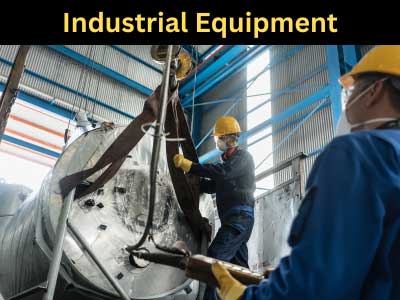Key Takeaway
Yes, leased equipment can be classified as a fixed asset if it meets certain criteria. Under accounting standards like ASC 842, leased equipment is considered a fixed asset when the lease term is longer than 12 months, and the lessee has control over the asset. This means the equipment is recorded on the balance sheet as both an asset and a liability.
Classifying leased equipment as a fixed asset has financial implications. It reflects the long-term use of the equipment in your business operations and affects depreciation and tax calculations. Properly accounting for leased equipment ensures accurate financial reporting and compliance with accounting standards.
What Defines a Fixed Asset?
A fixed asset, sometimes referred to as a tangible asset, is a long-term resource that a company owns and uses to generate income. These assets are not meant for immediate sale and typically include machinery, buildings, and vehicles. Fixed assets are valuable to businesses because they contribute to operations over time, and their cost is depreciated throughout their useful life.
To qualify as a fixed asset, the item must meet certain criteria:
It must have a useful life of more than one year.
It should be intended for long-term business use.
The business must have control over the asset during its useful life.
Fixed assets are recorded on the balance sheet and depreciated over time to reflect wear and tear. Leased equipment, depending on the lease type, can either be treated as a fixed asset or simply an operational cost.

Accounting Treatment of Leased Equipment
The accounting treatment of leased equipment depends on the nature of the lease. Under the guidelines of International Financial Reporting Standards (IFRS) and Generally Accepted Accounting Principles (GAAP), there are two main categories: operating leases and capital leases (now often referred to as finance leases).
A capital lease transfers the risks and rewards of ownership to the lessee, even though the title may not be transferred at the end of the lease term. In this case, the equipment is treated as a fixed asset on the balance sheet. The business can capitalize on the asset and depreciate it over time, similar to other owned assets.
On the other hand, an operating lease is a short-term rental arrangement where the equipment remains the property of the lessor. Payments are treated as operational expenses, and the leased equipment does not appear on the balance sheet as a fixed asset.
Capital vs. Operating Leases in Asset Accounting
The distinction between capital and operating leases plays a key role in determining whether leased equipment can be classified as a fixed asset. With a capital lease, the equipment is recognized as an asset and a corresponding liability is recorded on the balance sheet. The lessee, in this case, takes on the responsibilities of ownership, including depreciation and interest expense.
To be classified as a capital lease, the agreement must meet one or more of the following criteria:
The lease transfers ownership of the asset to the lessee at the end of the term.
The lease contains a bargain purchase option, allowing the lessee to purchase the asset at a price lower than its fair market value.
The lease term is for a significant portion of the asset’s useful life (typically 75% or more).
The present value of lease payments equals or exceeds a substantial portion (90% or more) of the asset’s fair value.
If none of these criteria are met, the lease is classified as an operating lease. Operating leases are not considered fixed assets because they do not transfer ownership or significant responsibilities to the lessee.
Ownership Rights and Responsibilities of Leased Equipment
Ownership rights play a crucial role in determining whether leased equipment can be classified as a fixed asset. In a capital lease, while the legal title of the equipment remains with the lessor, the lessee assumes the economic benefits and risks, including maintenance and insurance. Essentially, the lessee acts as if they own the equipment throughout the lease term, which justifies treating it as a fixed asset.
Conversely, in an operating lease, the lessor retains ownership and control over the asset. The lessee only has temporary usage rights, making the equipment more akin to a rented asset rather than an owned one. Since the lessee does not bear the risks of ownership, the equipment is treated as an operational expense, not a fixed asset.
For businesses aiming to reflect accurate financials, determining ownership and usage rights is crucial when deciding how to treat leased equipment in their accounting practices.
How to Report Leased Equipment on Financial Statements
Reporting leased equipment on financial statements depends on the type of lease. For capital leases, the equipment appears as both an asset and a liability on the balance sheet. The asset is depreciated over its useful life, and the liability reflects the present value of lease payments. Interest expense is recorded in the income statement, alongside the depreciation expense.
In contrast, operating leases are off-balance-sheet transactions. Lease payments are recorded as expenses on the income statement, but the equipment itself does not appear on the balance sheet. This treatment results in a simpler reporting process but does not build equity or reflect asset ownership.
Understanding these reporting methods helps businesses ensure compliance with financial regulations and improve the transparency of their financial statements.
Conclusion
Determining whether leased equipment qualifies as a fixed asset depends on the type of lease and the terms of the agreement. Capital leases, which transfer the risks and rewards of ownership to the lessee, typically qualify as fixed assets and are recorded on the balance sheet. On the other hand, operating leases, which provide short-term access without ownership rights, do not meet the criteria for fixed asset classification.
Businesses must carefully evaluate their leasing agreements and the corresponding accounting treatment to ensure accurate financial reporting. By understanding the distinctions between lease types, companies can make informed decisions about how to classify and manage their leased equipment, contributing to sound financial strategies and compliance.
